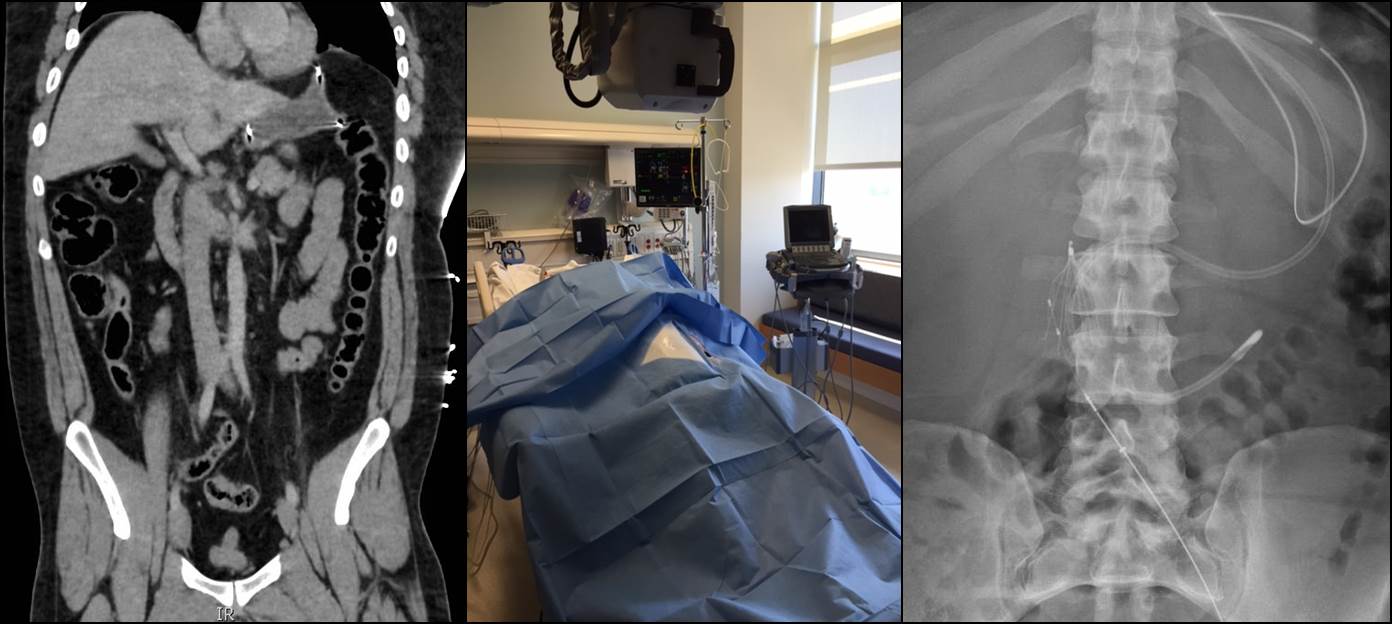Innovative Method Utilizing Flat-Panel Digital X-ray for Bedside Insertion of Inferior Vena Cava Filters in the Intensive Care Unit
Samuel L. Chen, M.D., Isabella J. Kuo, M.D., Nii-Kabu Kabutey, M.D., Roy M. Fujitani, M.D..
University of California, Irvine Medical Center, Orange, CA, USA.
Objectives: Bedside insertion of inferior vena cava (IVC) filters for critically ill patients in the intensive care unit (ICU) have been described using portable fluoroscopic units and intravascular ultrasound (IVUS) to identify the pertinent anatomy for optimal filter placement. While effective, utilization of these technologies is a costly use of resources. We describe a practical method of utilizing serial flat-panel digital X-rays coupled with prior review of CT imaging to place IVC filters at the bedside in the ICU. Methods: A previously-performed CT scan of the abdomen is first reviewed to assess the IVC anatomy. The relationship between the lowest renal vein and associated vertebral bony landmarks is then identified and used to plan ideal filter placement. Venous cannulation is performed under ultrasound-guidance. After insertion of the radio-opaque wire and sheath into the IVC, flat-panel abdominal X-ray images that are viewed instantaneously upon image-capture, confirm successful insertion and deployment of the IVC filter at the appropriate location. Results: Between 2011 and 2015, seven critically-ill patients (6 males, 1 female) requiring IVC filter placement were deemed ill-suited for transport to the angiography suite or operating room. IVC filters were placed at the bedside in the ICU, four of which utilized portal fluoroscopy or IVUS. The most recent three cases were performed utilizing the flat-panel digital X-ray method. Ages ranged from 18 to 56 years old. Two filters were placed prophylactically in trauma patients who were not able to be anticoagulated. Five filters were placed in patients for documented deep venous thrombosis with contraindication to anticoagulation. All procedures were technically successful and no post-procedural venous thromboembolic events were noted. Conclusions: We describe an innovative, cost-effective method for bedside insertion of IVC filters in the critically ill patient using flat-panel digital X-rays. This technique avoids the use of nephrotoxic contrast, minimizes radiation, and negates the cost of IVUS and risk of transport in the unstable patient. 
Back to 2018 ePosters




